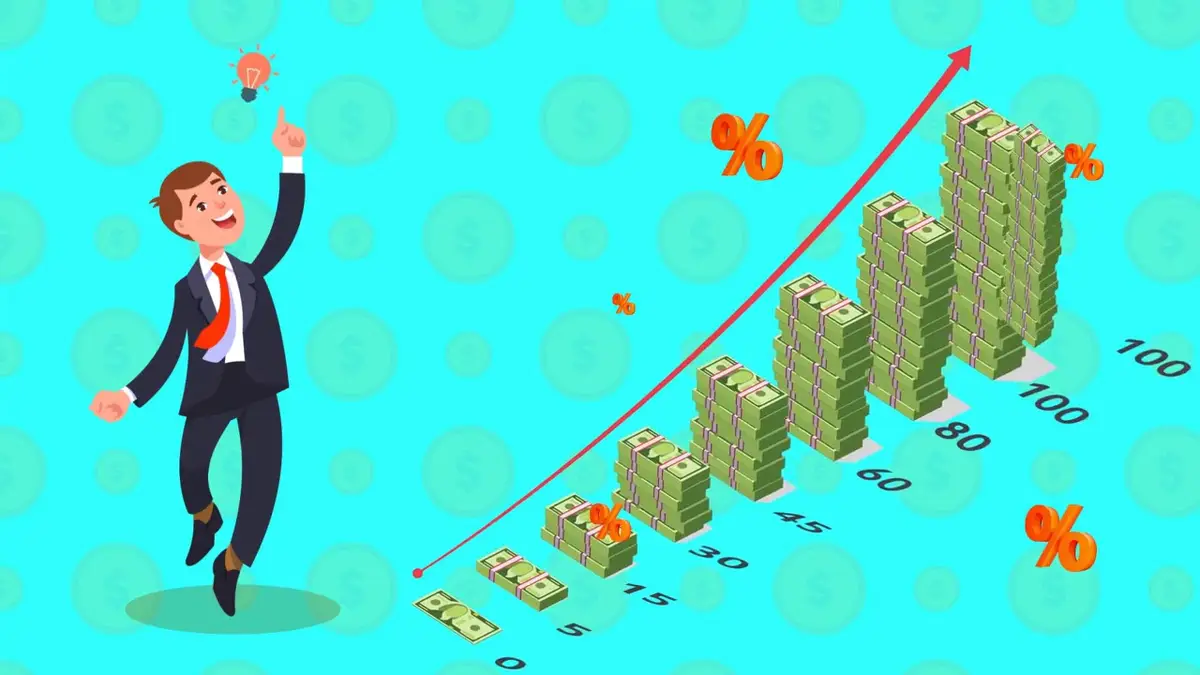In the financial world, there are several paths to true independence, but none are as elegant as passive income through stock investments. Just as a tree once planted bears fruit over the years, so too does stock investment benefit people without realizing it. This can be the key to a life without monthly expenses. An example of this are investors who started small but through patience and wise investments have built up capital and secured their future.
How passive income from stocks works
Stocks are a kind of financial mechanism that works like a clock and generates passive income. Important elements are dividends and increases in the value of securities. Dividends can be compared to the rent that a company pays to its shareholders for their trust. The independent advantage of the stock comes from stable growth, supported by financial performance and dividend yield.

Long-term appreciation of securities
Over the past decade, many companies have generated significant profits for their shareholders. Gazprom shares rose by more than 200% and Sberbank by 250%, which brings significant benefits to long-term investors. In 2022, Gazprom paid 52.53 rubles per share and Sberbank paid 25 rubles per share. These payments became a guaranteed automatic source of profit for investors. Patience is important: shares earn back most of your capital over time. Reinvestment can double or triple your return, especially if you take compound interest into account.
Why is investing in shares the best way to generate passive income?
 Compared to real estate and bank deposits, shares have the advantage that returns can grow almost indefinitely. Real estate has maintenance costs and deposit income often does not even cover inflation. As the company grows, share prices rise and dividends flow into the account continuously.
Compared to real estate and bank deposits, shares have the advantage that returns can grow almost indefinitely. Real estate has maintenance costs and deposit income often does not even cover inflation. As the company grows, share prices rise and dividends flow into the account continuously.
Reliability of dividend companies
Investing in shares to generate passive income makes sense for large companies that have shown steady growth and stable dividends for years. For example, Rostelecom and MTS packages are not only more expensive, but also offer more stable payments, making them an excellent choice. Real numbers:
- In 2022, Rostelecom paid 5.39 rubles per unit.
- In 2022, MTS paid 33.85 rubles per unit.
The data shows stability and attractiveness for long-term investors.
The impact of dividends on profitability
A gold mine for anyone who wants to get involved without investing money. Shares of companies such as Lukoil and Novatek are real dividend champions. Even in the most difficult times, shareholders did not leave empty-handed, making these investments attractive and reliable. It is important to select companies that have strong financial performance and a positive history of dividend payments.
Dividend reinvestment as a growth strategy
Investors often pay attention to the stability of dividends and the possibility of increasing them. By reinvesting, you can ensure that each ruble you receive still serves its purpose and increases the size of your portfolio. The strategy consists of several steps:
- Select reliable companies: identify companies with stable dividend payments, such as Lukoil or MTS.
- Open a securities account: register with a reputable broker who provides access to the shares of these companies.
- Buy shares: buy shares based on dividend yield and growth potential.
- Receive and reinvest dividends: Dividends received in the account should be used to purchase new shares, thereby growing the portfolio based on compound interest.
- Continuous analysis and adjustment: monitor the financial performance of companies and adjust the portfolio composition if necessary to achieve maximum profitability.
How to start investing in Russian stocks and earn passive income?
To start your journey to passive income through stock investing, you need to follow a series of consecutive steps. First, choose a broker who will give you access to the stock market. In Russia, the most popular are Tinkoff Investments, BCS World of Investments and Sberbank Investor. After you select a broker, a securities account is opened and the stock selection process begins.
Strategy for selecting the first actions
For beginners, it is advisable to start with shares of companies that already have an established position on the market. For example, Sberbank and Norilsk Nickel are suitable for initial investments. Avoid emotional decisions and do not try to “play the stock market”: professionals prefer long-term strategies and stable capital growth.
Features of the Russian stock market
The Russian stock exchange platform is characterized by unique features. An important feature is the high dividend yield of many companies, such as MTS and Surgutneftegaz. The domestic market is highly dependent on raw materials. This should be taken into account when selecting assets.
Taxes and tax deductions
Taxes also deserve attention: in Russia, the standard tax rate is 13%, which makes investing more profitable than in countries with higher taxes. In addition, there are tax deductions that allow you to get back part of your money if you use individual investment accounts (IIAs), which makes investing in securities in Russia even more attractive.

Diploma
 Passive income from stock investments is a real and proven way to achieve financial independence. Securities provide the opportunity to generate stable income that only increases over time due to business growth and reinvestment of payments. Anyone who thinks about their future financial freedom should try this tool. The main thing is to start small, be patient and approach the task strategically. Financial independence through action is possible for anyone who is willing to learn and develop.
Passive income from stock investments is a real and proven way to achieve financial independence. Securities provide the opportunity to generate stable income that only increases over time due to business growth and reinvestment of payments. Anyone who thinks about their future financial freedom should try this tool. The main thing is to start small, be patient and approach the task strategically. Financial independence through action is possible for anyone who is willing to learn and develop.
 en
en  de
de  ar
ar  es
es  nl
nl  hi
hi  fr
fr  it
it  pt
pt  el
el 



